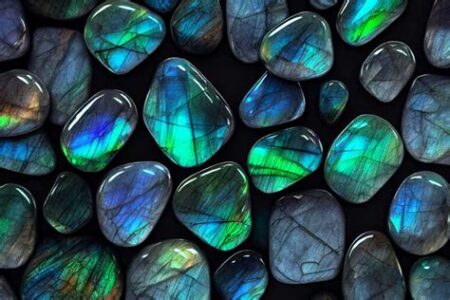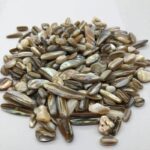Authenticating crystals is crucial for both enthusiasts and collectors seeking genuine gemstones. Distinguishing real crystals from counterfeits can be challenging, but understanding the telltale signs can empower you to make informed decisions. This comprehensive guide provides a detailed analysis of various methods to identify real crystals, ensuring you invest wisely in the beauty and energy of genuine gemstones.

Properties of Real Crystals:
- Natural Occurrence: Crystals are formed naturally through geological processes and are not man-made.
- Unique Structure: Each crystal possesses a distinct crystalline structure, which determines its shape, cleavage, and optical properties.
- Crystalline Imperfections: Natural crystals often have inclusions, bubbles, or other imperfections that indicate their genuine nature.
- Hardness Scale: Crystals have varying degrees of hardness, measured on the Mohs scale. Diamonds are the hardest known mineral (10), while gypsum is among the softest (2).
- Refractive Index: Crystals exhibit unique refractive indices, which determine how light bends when passing through them. This property can be used for identification with a refractometer.
Common Counterfeits and Identification Techniques:
Many synthetic or imitation crystals mimic the appearance of genuine gemstones. Here are some common counterfeits and techniques to distinguish them:
| Counterfeit Material | Identification Method |
|---|---|
| Glass | Glass imitations lack the inclusions and crystal structure of natural crystals. Use a loupe or microscope to examine for clarity and bubble imperfections. |
| Cubic Zirconia (CZ) | CZ is harder than glass but softer than genuine crystals (8.5 vs. 7-10). A refractometer can distinguish between CZ and real crystals based on refractive index. |
| Synthetic Fluorite | Synthetic fluorite can be identified by its uniform color and lack of inclusions. Genuine fluorite often has banded or mottled colors with visible inclusions. |
| Glass-Filled Emeralds | Glass-filled emeralds are genuine emeralds that have been treated with a glass resin to improve their color and clarity. This treatment is often detectable under magnification, revealing tiny bubbles or fissures in the resin. |
Other Identification Methods:
1. Light Transmission: Place the crystal between a light source and a white surface. Real crystals often refract (bend) light, creating a rainbow effect or producing a sharp shadow on the surface.
2. Conductance: Some crystals, such as quartz, are piezoelectric, meaning they generate an electrical charge when pressure is applied. Use a multimeter to test for electrical conductivity before investing.
3. Scratch Test: Use a steel nail or pocket knife to gently scratch the crystal’s surface. Genuine crystals will not be easily scratched, while imitations may show signs of wear or damage.
4. Optical Properties: Examine the crystal’s optical properties using a jeweler’s loupe or microscope. Look for internal structures, cleavage planes, and any flaws or irregularities.
Benefits of Identifying Real Crystals:
Authenticating crystals not only guarantees their value and longevity but also ensures you reap the true benefits they offer:
- Emotional Healing: Crystals have been used throughout history for emotional healing and spiritual growth. Genuine crystals emit subtle vibrations that are believed to interact with the body’s energy fields, promoting peace and well-being.
- Physical Health: Some crystals are believed to possess healing properties, such as amethyst for headaches and green aventurine for heart health. While scientific evidence for these claims is limited, many believe in the power of crystals to support overall well-being.
- Aesthetic Appreciation: Real crystals are visually stunning and can be used to create beautiful jewelry, home décor, and other decorative items. Their natural beauty adds elegance and style to any environment.
Conclusion:
Identifying real crystals requires careful observation, knowledge, and a desire for authenticity. By understanding the unique properties of crystals and employing the identification techniques outlined in this guide, you can confidently invest in genuine gemstones that will bring joy, beauty, and potential healing benefits for years to come.




























